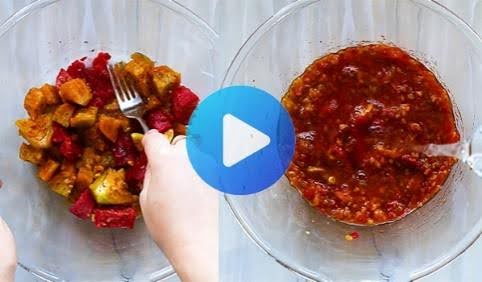Losing weight quickly is something many people think about. Seeing a big number drop on the scale in just seven days sounds amazing, right? I get it. Maybe you have a special event coming up, or you just want a fast start to feeling better. This smoothie plan is designed to help you feel lighter and maybe see that scale move, but let’s talk honestly about what losing 10 pounds in a week really means.
A lot of that initial fast weight loss is often water weight, not just body fat. Our bodies store water for many reasons, and when we change our eating habits suddenly, especially by cutting down on salty foods and certain carbohydrates, we can shed that water quickly. It feels good, and it can be motivating. However, it’s super important to know that losing fat takes more time and consistent effort. Think of this plan as a jumpstart, a way to reset your habits, not a magic trick for long-term fat loss. Sustainable, healthy weight loss is usually slower, maybe 1-2 pounds per week.
So, while this plan might help you lose up to 10 pounds in water and some fat, please remember that results vary a lot from person to person. Your starting weight, metabolism, activity level, and how closely you follow the plan all play a big role. The most important thing is to listen to your body and focus on feeling healthier overall.
Why Smoothies Can Help (for a Short Time)
Smoothies can be a useful tool for a short-term plan like this one. Here’s why:
- Calorie Control: It’s easier to manage how many calories you eat when your meals are planned out like this. Smoothies, if made right, can be filling but lower in calories than many typical meals.
- Nutrient Boost: You can pack a lot of good stuff into a smoothie – fruits, vegetables, protein, healthy fats. This helps make sure you’re getting important vitamins and minerals even while eating less.
- Hydration: Smoothies have a high water content, which helps you stay hydrated. Being hydrated is key for overall health and can also help manage hunger.
- Simplicity: Let’s face it, figuring out meals can be tiring. Having a simple smoothie plan takes some of the guesswork out of eating for a week.
But, smoothies are not a perfect solution forever. Chewing whole foods is important for digestion and feeling satisfied. Relying only on liquids long-term isn’t usually recommended. This is a one-week plan, meant to be temporary.
Understanding Nutrition Basics for Weight Management
Before we jump into the smoothie recipes, let’s touch on some simple nutrition ideas. Knowing this helps you understand why the plan might work and how to eat healthily afterward.
- Calories In vs. Calories Out: At its simplest, weight loss happens when you use more energy (calories) than you take in. This plan helps reduce the “calories in” part.
- Macronutrients: These are the main types of nutrients:
- Protein: Helps you feel full, keeps your muscles strong (important when losing weight), and your body uses a little more energy to digest it. Good sources include Greek yogurt, protein powder, nuts, and seeds.
- Carbohydrates: Your body’s main energy source. We want to focus on complex carbs like those in fruits, vegetables, and whole grains (though we limit grains on this short plan). These give you energy slowly. Simple carbs, like sugar and white flour, give quick energy but can lead to crashes and cravings.
- Fats: Essential for hormones and absorbing certain vitamins. Focus on healthy fats found in avocados, nuts, seeds, and olive oil. These also help you feel satisfied.
- Micronutrients: These are vitamins and minerals. Fruits and vegetables are packed with them. They don’t provide calories, but they are vital for your body to work properly.
- Fiber: Found in plants (fruits, veggies, seeds, nuts). Fiber helps with digestion, keeps you feeling full, and helps control blood sugar.
This smoothie plan tries to balance these nutrients while keeping calories lower.
The One-Week Smoothie Plan Guidelines
Okay, here’s the basic idea for the week. Remember, this is intense and not meant for long-term use.
The Core Idea: Replace two of your main meals (usually breakfast and lunch) with a specially designed smoothie. Have one sensible, balanced solid meal for dinner. Include two small, healthy snacks if needed. Drink plenty of water throughout the day.
Important Rules:
- Hydration is Key: Drink at least 8-10 glasses of water daily. Water helps fill you up, keeps your metabolism working, and helps flush out waste. You can also have herbal tea (unsweetened). Avoid sugary drinks, soda, and excessive caffeine.
- Listen to Your Body: If you feel overly hungry, dizzy, weak, or unwell, stop the plan. This is not about suffering. Add a healthy snack or modify the plan. Your health comes first.
- Dinner Details: Your solid meal should be balanced. Focus on lean protein (like chicken breast, fish, tofu, beans), lots of non-starchy vegetables (like broccoli, spinach, peppers, zucchini), and a small portion of healthy fat (like avocado or olive oil dressing). Avoid large portions of starchy carbs (like pasta, white rice, bread) during this week.
- Snack Smart: If you need snacks, choose wisely. Good options include a small handful of nuts (like almonds), a hard-boiled egg, some veggie sticks (cucumber, celery) with a little hummus, or a small piece of fruit (like an apple or berries). Keep snacks small, around 100-150 calories.
- No Processed Junk: Avoid processed foods, sugary treats, fried foods, and excessive salt this week. These work against your goals.
Sample Smoothie Recipes (Mix and Match)
Here are some ideas. Feel free to adjust based on what you like and have available, but stick to the basic formula: Liquid Base + Protein Source + Fruits/Veggies + Healthy Fat/Fiber Boost.
You Might Be Interested In: Learning more about The Complete Smoothie Detox & Weight Loss Program
Formula Guide:
- Liquid Base (1-1.5 cups): Water, unsweetened almond milk, unsweetened coconut water, green tea (cooled).
- Protein Source (20-30g): Plain Greek yogurt (0% or 2% fat), unsweetened protein powder (whey, casein, or plant-based), cottage cheese, silken tofu.
- Vegetables (1-2 cups): Spinach, kale, cucumber, celery, zucchini (raw), cooked beets (small amount). Leafy greens are great because they add nutrients without strong flavors.
- Fruit (1/2 – 1 cup): Berries (strawberries, blueberries, raspberries), half a banana, apple slices, peach slices. Fruit adds sweetness and vitamins, but watch portion sizes to control sugar.
- Healthy Fat / Fiber Boost (1 tbsp): Chia seeds, flax seeds, hemp seeds, almond butter (unsweetened), avocado (1/4). These add staying power.
- Optional Flavor: Cinnamon, nutmeg, vanilla extract (unsweetened), fresh mint, fresh ginger.
Recipe Examples:
- Green Power Smoothie:
- 1 cup unsweetened almond milk
- 1 scoop vanilla protein powder (or 1/2 cup Greek yogurt)
- 1 large handful spinach
- 1/2 cup frozen mixed berries
- 1 tbsp chia seeds
- Berry Blast Smoothie:
- 1 cup water
- 1/2 cup plain Greek yogurt
- 1 cup frozen strawberries
- 1/2 cup kale (stems removed)
- 1 tbsp flax seeds
- Tropical Refresher Smoothie:
- 1 cup coconut water (unsweetened)
- 1 scoop plain or vanilla protein powder
- 1/2 cup frozen mango chunks
- 1/2 cup cucumber slices
- 1 tbsp hemp seeds
- Creamy Avocado Smoothie:
- 1 cup water or almond milk
- 1/2 cup cottage cheese (or Greek yogurt)
- 1 large handful spinach
- 1/4 avocado
- Squeeze of lime juice (optional)
- Note: This one is lower in fruit sugar.
- Apple Cinnamon Smoothie:
- 1 cup unsweetened almond milk
- 1 scoop vanilla protein powder
- 1/2 apple, cored and chopped
- 1 small handful spinach (you won’t taste it)
- 1 tbsp almond butter
- Dash of cinnamon
Tips for Making Great Smoothies:
- Use Frozen Fruit/Veggies: This makes your smoothie cold and thick without needing ice, which can water it down.
- Blend Well: Blend until completely smooth to avoid chunks. A good blender helps.
- Adjust Liquid: Add more liquid if it’s too thick, or more frozen fruit/ice if it’s too thin.
- Prep Ahead: You can portion out dry ingredients (protein powder, seeds) and frozen items into bags for quick morning prep.
What About Exercise?
While this plan focuses heavily on diet for rapid results, adding some light movement can help. Don’t overdo it, especially since your calorie intake is lower. Intense exercise might make you feel weak or overly hungry.
- Focus on Light Activity: Aim for 30 minutes of gentle movement most days.
- Good Choices:
- Walking: A brisk walk outdoors or on a treadmill.
- Stretching or Yoga: Gentle yoga focuses on flexibility and mindfulness.
- Light Bodyweight Exercises: Things like squats, lunges, or modified push-ups, but keep reps low and focus on form.
- Listen to Your Energy Levels: If you feel tired, opt for rest or very light stretching instead. Pushing too hard when eating less isn’t wise.
- Stay Hydrated: Drink water before, during, and after any activity.
Exercise helps burn a few extra calories, supports muscle maintenance, and boosts your mood. But during this specific week, diet is doing most of the heavy lifting for weight change.
Special Considerations for Women
Women’s bodies have unique needs, especially when it comes to weight management and dietary changes.
- Hormonal Fluctuations: Your menstrual cycle can affect your weight, energy levels, and cravings. Weight can fluctuate due to water retention at certain times of the month. Be mindful of this and don’t get discouraged if the scale seems stuck for a day or two.
- Nutrient Needs: Women need adequate iron (especially pre-menopause), calcium, and folate. Ensure your smoothies and solid meal include sources of these. Leafy greens (spinach, kale) are great for iron and folate. Dairy or fortified plant milk helps with calcium.
- Metabolism: Sometimes, women have slightly slower metabolisms than men of the same size, partly due to differences in muscle mass. Protein intake is important to help maintain muscle during weight loss.
- Body Image and Relationship with Food: It’s important to approach any diet plan with a healthy mindset. Focus on nourishing your body, not punishing it. If you have a history of disordered eating, plans like this are generally not recommended without guidance from a healthcare professional.
Safety First: Is This Plan Right for You?
Rapid weight loss plans are not suitable for everyone.
- Consult Your Doctor: Before starting any drastic diet change, especially one aiming for rapid weight loss, talk to your doctor or a registered dietitian. This is particularly important if you have any underlying health conditions (like diabetes, kidney problems, heart issues), are pregnant or breastfeeding, or are taking medications.
- Not Sustainable Long-Term: Remember, this is a one-week plan. It’s not a balanced way to eat forever. Long-term health comes from sustainable habits.
- Potential Side Effects: You might experience temporary side effects like fatigue, headaches, or changes in digestion as your body adjusts. Severe symptoms mean you should stop the plan.
- Focus on Health, Not Just the Number: While the goal is weight loss, pay attention to how you feel. Are you gaining energy (after the initial adjustment)? Sleeping better? Feeling less bloated? These are also important signs of progress.
Life After the Smoothie Week
So, you’ve completed the week. What now? Going straight back to your old eating habits will likely cause you to regain the weight quickly (especially the water weight). The key is to transition smoothly into a sustainable, healthy eating pattern.
- Gradually Reintroduce Foods: Don’t jump back into heavy meals immediately. Slowly add back more whole foods. Start by replacing one smoothie with a balanced solid meal (like a large salad with protein, or oatmeal with fruit and nuts).
- Focus on Whole Foods: Build your meals around vegetables, fruits, lean proteins, whole grains (like quinoa, brown rice, oats), and healthy fats.
- Portion Awareness: Continue being mindful of portion sizes.
- Maintain Hydration: Keep drinking plenty of water.
- Regular Exercise: Incorporate regular physical activity that you enjoy into your routine. Aim for a mix of cardio and strength training for long-term health and weight management.
- Mindful Eating: Pay attention to your hunger and fullness cues. Eat slowly and savor your food.
Think of this smoothie week as a tool to reset, break some old habits, and motivate you to adopt a healthier lifestyle moving forward. The real success comes from the positive changes you maintain long after the week is over.
Related YouTube Video
For more ideas and visual guides on making healthy smoothies, you might find this video helpful:
Final Thoughts
Embarking on a plan to feel lighter and healthier is a positive step. This one-week smoothie approach can offer a quick reset and motivation. Remember that much of the initial weight loss might be water, and sustainable fat loss takes time and consistency. Use this week to learn about healthier ingredients, practice portion control, and kickstart better habits. Always prioritize your health, listen to your body’s signals, and aim for long-term well-being rather than just a quick fix on the scale. The journey to a healthier you is ongoing, and this week can be a valuable first step if approached wisely.







